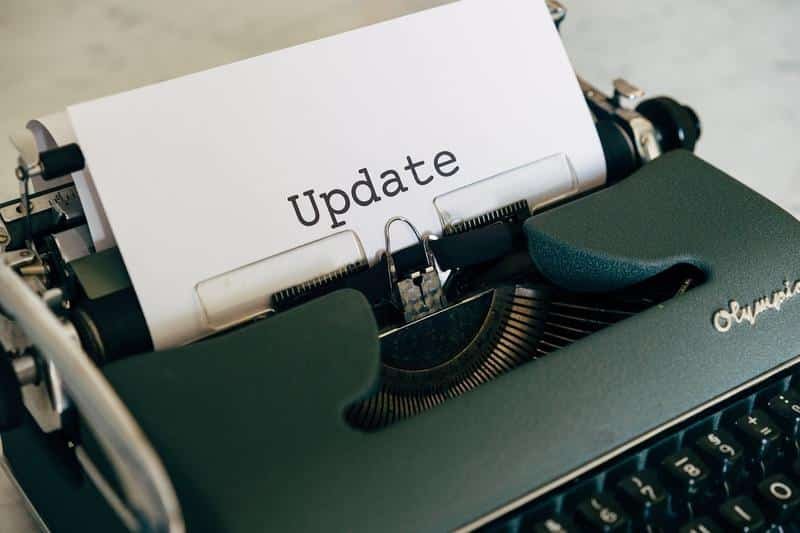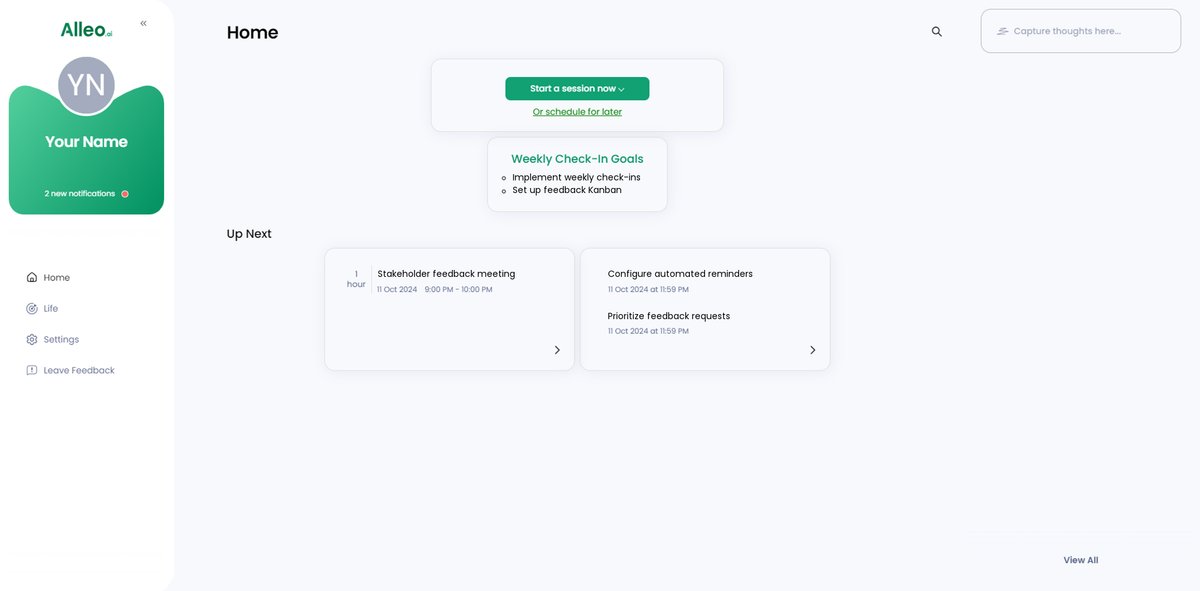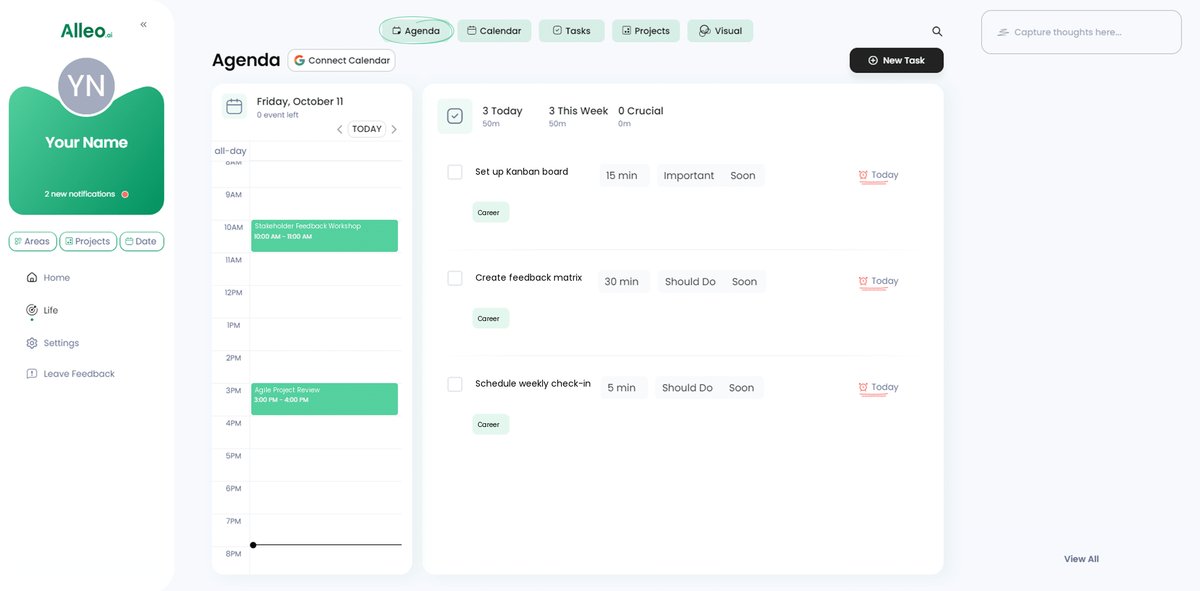5 Powerful Strategies to Reduce Stakeholder Feedback Delays for Agile Project Managers
Are you tired of waiting two weeks for stakeholder feedback, only to find out there were misunderstandings or unmet requirements? Reducing stakeholder feedback delays is crucial for agile project management.
As a life coach, I’ve helped many professionals overcome similar challenges in stakeholder communication strategies. In my experience, timely feedback is crucial for maintaining project momentum and team morale, especially when optimizing feedback loops in agile processes.
In this article, you’ll discover practical strategies like frequent check-ins, real-time stakeholder collaboration tools, and automated reminders to reduce feedback delays and improve sprint review efficiency. These rapid feedback collection methods can significantly enhance stakeholder engagement in agile projects.
Let’s dive in and explore how to reduce bottlenecks in agile feedback and streamline your agile project timelines.

The Impact of Delayed Feedback on Agile Projects
Reducing stakeholder feedback delays can be incredibly frustrating in Agile project management. They disrupt project timelines and undermine team morale.
Imagine waiting two weeks for stakeholder input only to realize key requirements were missed. This scenario, hampering sprint review efficiency, is all too common.
In my experience, many professionals struggle with these delays, often leading to project setbacks. It’s a challenge that can drastically slow down Agile processes and feedback loop optimization.
When feedback is delayed, teams can’t address misunderstandings quickly. This delay hampers progress and may result in repeated work, affecting Agile project timelines.
Ultimately, timely feedback is essential for reducing stakeholder feedback delays. It keeps projects on track and ensures that everyone’s efforts are aligned with the goals, enhancing stakeholder engagement in Agile.

Key Steps to Reduce Stakeholder Feedback Delays
Overcoming this challenge requires a few key steps. Here are the main areas to focus on to make progress in reducing stakeholder feedback delays and optimizing your feedback loop.
- Implement frequent, brief stakeholder check-ins: Schedule weekly 15-minute meetings to gather feedback, improving sprint review efficiency.
- Use interactive, real-time collaboration tools: Adopt software like Celoxis for instant updates and visibility, enhancing stakeholder engagement in agile processes.
- Prioritize and segment feedback requests: Categorize feedback by urgency and impact on the project, a crucial agile project management technique.
- Create a stakeholder feedback Kanban board: Visualize and track feedback requests and responses, reducing bottlenecks in agile feedback.
- Automate status updates and reminders: Use automated tools for email reminders and project status updates, streamlining stakeholder communication strategies.
Let’s dive in!
1: Implement frequent, brief stakeholder check-ins
Frequent, brief stakeholder check-ins are essential for reducing stakeholder feedback delays and maintaining project momentum in Agile project management.
Actionable Steps:
- Schedule weekly 15-minute meetings to gather feedback and address concerns promptly, optimizing sprint review efficiency.
- Use a standardized agenda to keep these meetings focused and efficient, enhancing stakeholder communication strategies.
- Rotate meeting times to accommodate different stakeholders’ schedules and increase participation, improving stakeholder engagement in agile.
Benefits of frequent check-ins:
- Improved communication flow
- Faster issue resolution, reducing bottlenecks in agile feedback
- Enhanced stakeholder engagement
Explanation: These steps matter because they help in gathering timely feedback, which is crucial for keeping your Agile project timelines on track.
According to Teamdeck, frequent feedback loops ensure alignment with business goals and customer needs, supporting continuous improvement in agile processes.
By implementing these check-ins, teams can address misunderstandings quickly and avoid project delays, effectively reducing stakeholder feedback delays.
This approach aligns with current industry trends emphasizing continuous feedback and stakeholder engagement, utilizing rapid feedback collection methods.
This proactive strategy will help you reduce feedback delays and keep your project moving forward smoothly, leveraging effective stakeholder collaboration tools.

2: Use interactive, real-time collaboration tools
Using interactive, real-time collaboration tools is essential for reducing stakeholder feedback delays and keeping your Agile project on track.
Actionable Steps:
- Adopt project management software: Utilize tools like Celoxis for instant updates and visibility. This software can help track progress and ensure everyone stays informed, optimizing feedback loop efficiency in Agile project management.
- Integrate interactive features: Use tools with live document editing and instant messaging, such as Slack or Microsoft Teams. These features facilitate quick feedback and collaboration, enhancing stakeholder communication strategies.
- Host virtual brainstorming sessions: Leverage virtual whiteboards during sprints to gather input and ideas in real-time, improving sprint review efficiency and stakeholder engagement in agile.
Explanation: These steps matter because they enable real-time communication and collaboration, which are crucial for Agile projects and reducing stakeholder feedback delays.
According to Teamdeck, frequent feedback loops ensure alignment with business goals and customer needs.
By adopting these stakeholder collaboration tools, you can quickly address issues and keep your Agile project timelines on track.
Implementing these tools will streamline your feedback process, reduce bottlenecks in agile feedback, and enhance project success through continuous improvement in agile processes.

3: Prioritize and segment feedback requests
Prioritizing and segmenting feedback requests is crucial to managing input effectively and reducing stakeholder feedback delays, keeping your project on track.
Actionable Steps:
- Categorize feedback by urgency and impact: Assign each feedback item a priority level based on its potential influence on the project, optimizing the feedback loop.
- Create a feedback request matrix: Develop a visual tool to help stakeholders understand the priority and urgency of their feedback, enhancing stakeholder communication strategies.
- Assign feedback based on expertise: Direct specific feedback requests to stakeholders best suited to address them, ensuring efficient use of resources and improving sprint review efficiency.
Key benefits of prioritizing feedback:
- Focused attention on critical issues
- Improved resource allocation
- Streamlined decision-making process
Explanation: These steps matter because they help manage and streamline the feedback process, reducing delays and optimizing agile project timelines.
Prioritizing and segmenting feedback ensures that critical issues are addressed promptly, keeping the project on schedule and enhancing stakeholder engagement in agile environments.
According to Wrike, effective stakeholder management involves understanding expectations and strategically managing their involvement.
Implementing these strategies will enhance your feedback process and project outcomes, contributing to continuous improvement in agile processes.

4: Create a stakeholder feedback Kanban board
Creating a stakeholder feedback Kanban board is crucial for reducing stakeholder feedback delays and tracking feedback efficiently.
Actionable Steps:
- Set up a Kanban board: Use columns like “Requested,” “In Progress,” “Under Review,” and “Resolved” to visualize feedback flow and optimize feedback loop efficiency.
- Hold regular review sessions: Schedule weekly meetings to update the board and address any feedback bottlenecks, improving sprint review efficiency.
- Assign tasks effectively: Allocate feedback items to specific team members to ensure efficient handling and resolution, enhancing stakeholder engagement in agile processes.
Explanation: These steps matter because they streamline the feedback process, keeping agile project timelines on track.
A Kanban board helps visualize progress, making it easier to identify and address issues promptly, thus reducing bottlenecks in agile feedback.
According to Wrike, effective stakeholder management involves clear communication and timely feedback. Using a Kanban board aligns with this principle, enhancing project outcomes and stakeholder communication strategies.
By implementing this strategy, you can ensure a more organized and timely feedback process, effectively reducing stakeholder feedback delays.

5: Automate status updates and reminders
Automating status updates and reminders is essential for reducing stakeholder feedback delays and keeping your Agile project on track.
Actionable Steps:
- Implement automated email reminders: Use project management techniques and tools to send automatic reminders to stakeholders for their feedback, optimizing the feedback loop.
- Set up automated status updates: Configure your stakeholder collaboration tools to provide real-time updates on project progress and feedback status, enhancing sprint review efficiency.
- Use AI-driven tools: Employ AI tools to analyze feedback trends and provide insights for continuous improvement in agile processes.
Advantages of automation in feedback management:
- Reduced manual follow-up efforts, minimizing bottlenecks in agile feedback
- Consistent and timely communication, improving stakeholder engagement in agile
- Improved stakeholder satisfaction through rapid feedback collection methods
Explanation: These steps matter because they streamline communication, ensuring timely feedback and keeping agile project timelines on schedule.
According to Project Engineer, AI can enhance transparency and improve stakeholder communication strategies. By automating updates and reminders, you can minimize delays and maintain project momentum.
This approach will help you manage feedback efficiently and keep your Agile project running smoothly while reducing stakeholder feedback delays.

Work with Alleo to Streamline Stakeholder Feedback
We’ve explored the challenges of reducing stakeholder feedback delays in agile project management. But did you know you can work directly with Alleo to make this easier and faster, optimizing your feedback loop?
Set up an account and create a personalized plan with Alleo. Our AI coach will schedule and remind you about stakeholder check-ins, enhancing stakeholder engagement in agile processes and improving sprint review efficiency.
Alleo tracks feedback and automates updates, employing stakeholder communication strategies to streamline your agile project timelines. Get tailored coaching support with full coaching sessions like any human coach, focusing on continuous improvement in agile processes.
Start with a free 14-day trial, no credit card needed. Experience how our stakeholder collaboration tools can help in reducing bottlenecks in agile feedback.
Ready to get started for free and explore rapid feedback collection methods? Let me show you how!
Step 1: Log In or Create Your Account
To start streamlining your stakeholder feedback process, log in to your Alleo account or create a new one if you haven’t already.

Step 2: Choose “Building better habits and routines”
Click on “Building better habits and routines” to focus on developing consistent practices that will help you streamline your feedback process and reduce delays, aligning your daily actions with your project management goals.

Step 3: Select “Career” as Your Focus Area
Choose “Career” as your focus area in Alleo to tackle stakeholder feedback delays head-on, aligning perfectly with your goal of streamlining project communication and boosting professional efficiency.

Step 4: Starting a coaching session
Begin your journey with Alleo by scheduling an initial intake session, where you’ll discuss your stakeholder feedback challenges and create a personalized plan to streamline your project communication process.

Step 5: Viewing and managing goals after the session
After your coaching session, check the app’s home page to review and manage the goals you discussed, ensuring you stay on track with your feedback improvement strategies.

Step 6: Adding events to your calendar or app
Use Alleo’s calendar and task features to add stakeholder check-ins, feedback deadlines, and project milestones, allowing you to easily track your progress in reducing feedback delays and keeping your Agile project on schedule.

Bringing It All Together: Streamline Your Feedback Process
As we wrap up, it’s essential to remember that timely stakeholder feedback is crucial for project success and reducing stakeholder feedback delays.
Delays can disrupt timelines and morale, but we’ve outlined key strategies to help you overcome this challenge using agile project management techniques.
Implementing frequent check-ins, using real-time stakeholder collaboration tools, prioritizing feedback, creating a Kanban board for feedback loop optimization, and automating updates can transform your feedback process and improve sprint review efficiency.
Imagine the relief of knowing feedback is prompt and projects stay on track, effectively reducing bottlenecks in agile feedback.
Try Alleo to make this even easier and enhance stakeholder engagement in agile.
Alleo can schedule check-ins, track feedback, and automate updates, giving you the edge you need for continuous improvement in agile processes.
Ready to improve your feedback process and implement rapid feedback collection methods? Start your free trial with Alleo today to optimize your agile project timelines.